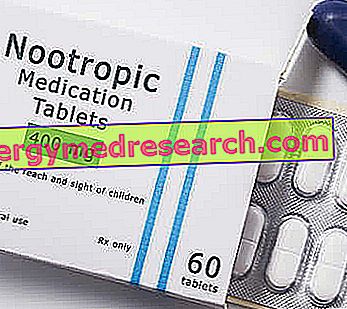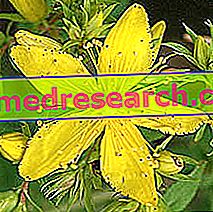Generality
Nootropics are particular substances, capable of increasing the cognitive abilities of an individual.
On the term "nootropic", however, there is often a great deal of confusion. In fact, depending on the countries in which it is used, it takes on different meanings.

In Italy, on the contrary, the concept of smart drugs takes on another meaning. In our country, in fact, smart drugs are the so-called "smart drugs", that is all those compounds (natural or synthetic) whose use is legal and not prohibited by law, but which can contain within them active principles with a psychoactive action whose use is unlawful.
However, the "nootropic - smart drugs" association is spreading a lot also in Italy. In fact, many people now use the two terms as synonyms.
In the medical field, however, when we talk about nootropic substances, we usually refer to particular drugs defined, precisely, nootropic and which are used for the treatment of different neurological pathologies characterized mainly by cognitive deficits.
Nootropic drugs
The introduction of the class of so-called nootropic drugs was proposed in the 1970s by the pharmacologist Corneliu E. Giurgea, who, in 1964, first synthesized the most famous nootropic drug still used in therapy: piracetam .
With the wording nootropic drugs, Giurgea wanted to indicate a set of active ingredients capable of improving the efficiency of higher brain functions (complex functions such as memory, reasoning, language, planning, learning, etc.).
From studies conducted by Giurgea himself, it emerged that the substance he identified as nootropa (piracetam) was able to promote learning abilities, hindering impairment and loss, but without producing side effects such as excitement or sedation, and without effects long-term toxic.
However, given the complexity of the mechanisms underlying cognitive functions such as learning and memory, many remained rather skeptical of the results of the research conducted by Giurgea.
However, nowadays, this category of drugs is recognized, even if, more precisely, it is customary to speak of the category of " psychostimulant and nootropic drugs ".
Within this category are included several active ingredients, used for the treatment of various neurological pathologies.
Below, some of the most well-known psychostimulant and nootropic drugs and their main characteristics will be illustrated.
Piracetam
As mentioned, piracetam (Nootropil®) was the first active ingredient in the class of nootropic drugs.
From the chemical point of view, piracetam can be defined as a cyclic derivative of GABA (the inhibitory neurotransmitter also known as gamma-aminobutyric acid).
Currently, piracetam is indicated for the treatment of cortical myoclonus, but it can also be used to treat mild cognitive impairment in elderly patients and to stimulate brain activity in Alzheimer's patients.
Piracetam exerts its action by interacting with the AMPA receptor, a particular type of ionotropic receptor involved in the conduction of excitatory stimuli and in learning and memorization processes. In fact, the endogenous substrates of AMPA are excitatory neurotransmitters such as glutamate.
Piracetam is able to activate this receptor (despite the chemical structure analogous to that of GABA), producing a cascade of chemical signals that leads to an improvement in cognitive functions.
Aniracetam
Aniracetam (Ampamet®) is another nootropic drug used in the treatment of elderly patients with disorders of attention and memory of degenerative origin (as happens, for example, in the case of Alzheimer's disease) or of vascular origin .
It is an analogue of the aforementioned piracetam, but seems to be much more powerful than the latter.
The mechanism of action with which aniracetam performs its action is similar to that of piracetam. Indeed, aniracetam also positively modulates the AMPA receptor, favoring and stimulating cognitive functions.
However, the scientific world is still divided on what concerns the real effectiveness of these drugs. Due to the fact that cognitive functions are regulated by a set of different and complex mechanisms, some scholars believe the usefulness of this type of active ingredients is doubtful.
methylphenidate
Methylphenidate (Ritalin®) is an active ingredient with a psychostimulant and nootropic action, which is used in the treatment of attention deficit hyperactivity disorder (ADHD).
Methylphenidate, in fact, has been shown to increase the brain activity of patients with ADHD, improving their attention and concentration. At the same time, however, methylphenidate is also able to exert a sort of calming action, reducing the impulsive behaviors that typically occur in patients suffering from this disease.
The exact mechanism of action with which methylphenidate exerts these activities has not yet been fully clarified. However, some scholars believe that this active ingredient exerts its action through the inhibition of dopamine reuptake and, to a lesser extent, noradrenaline, with a consequent increase in dopaminergic and noradrenergic signals.
Modafinil
Modafinil (Provigil®) is another drug belonging to the psychostimulant and nootropic category. However, this active ingredient is not normally used to increase and improve cognitive functions, but is indicated for the treatment of narcolepsy .
In fact, thanks to its psychostimulant action, modafinil helps patients suffering from this disease to maintain their waking state.
In some cases, however, modafinil has also been used as an off-label drug in the treatment of ADHD and the results obtained seem to be very encouraging, since an improvement in the cognitive abilities of the treated patients has been highlighted.
The mechanism of action, with which modafinil allows the maintenance of the waking state and with which it exercises its nootropic action, is not yet completely clear.
From some studies, however, it appears to have emerged that modafinil - similarly to the aforementioned methylphenidate - is able to inhibit the re-uptake of dopamine and noradrenaline through the link with the transporters of these neurotransmitters. All this translates, therefore, into an increase in dopaminergic and noradrenergic transmissions.
Furthermore, modafinil is capable of weakly interacting with numerous other receptors involved in the body's sleep / wake mechanisms (such as, for example, GABA, histamine or melatonin receptors).
In any case, the theory of inhibition of dopamine and norepinephrine reuptake seems to be the most plausible in explaining the nootropic effects induced by this active ingredient.



